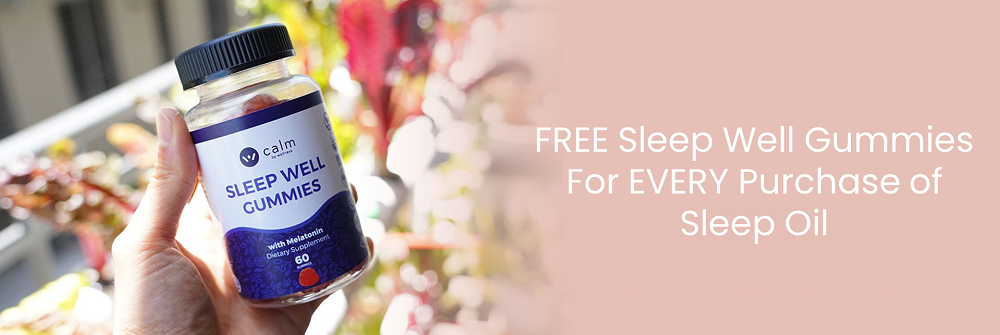
What is Attention Deficit Hyperactivity Disorder (ADHD)?
ADHD is a neurological disorder that causes problems with attention. It affects both children and adults.
The condition often runs in families and can be influenced by both genetic and environmental factors.
It’s a complicated disorder that impacts much of a child’s day-to-day life. It affects her ability to plan and make decisions, understand cause-and-effect, change habits, and read social cues.
Signs and Symptoms of ADHD
If you have a child who has difficulty staying focused and paying attention or who has trouble controlling their behavior, they may have ADHD. But not all kids who have these symptoms have ADHD, and it’s normal for kids to change their behavior from day to day or even hour to hour.
Typically, ADHD symptoms appear between the ages of 3 and 17 years old. They usually first start showing up when a child is in school, but they might show up earlier or later than this, depending on the severity of their symptoms and how they respond to treatment.
In children, ADHD symptoms are usually more obvious, and they can be very disruptive to other people in their lives. It’s also common for children with ADHD to have problems focusing and staying organized.
Adults with ADHD can have problems managing their time, completing tasks, maintaining relationships and having good health. They can also have difficulties concentrating, hyperactivity and impulsiveness.
Unlike in children, the symptoms of ADHD tend to decrease over time in adults. In fact, most people with ADHD have fewer or less severe symptoms as they get older, and this is a normal part of the process of learning to manage them.
Types of ADHD
ADHD is a behavioral disorder that causes symptoms of inattention, hyperactivity and impulsivity. It can interfere with everyday life and cause problems in school, work and relationships.
People with ADHD have different types of symptoms and behaviors that can vary from person to person. Doctors diagnose people with ADHD according to the primary symptoms they exhibit.
Typically, people with ADHD are diagnosed with one of three types: predominantly impulsive/hyperactive type (also called “predominantly hyperactive-impulsive” ADHD), predominantly inattentive type or combined type ADHD.
Predominantly impulsive/hyperactive type ADHD is the most common and most often diagnosed. These people are hyperactive and impulsive, and they may fidget constantly and have temper outbursts.
They also might interrupt others or insert themselves into conversations or activities to which they didn’t belong. They might also run around, wiggle or jump on furniture, climb on objects and even get in and out of cars.
People with inattentive type ADHD are usually forgetful and have trouble paying attention. They might misplace important things like their car keys or cell phone, and they might also have difficulty with organization.
Causes of ADHD
Many factors are thought to play a role in the development of ADHD, including genetics and differences in the way the brain is wired. In addition, environmental factors may also play a role. For example, some children are born with low birth weights or are exposed to toxins (like lead, PCBs, or pesticides) in the womb or during pregnancy.
It is believed that some toxins may interfere with the development of the central nervous system, which is the area that regulates attention and impulsive behavior. Research is ongoing to learn more about how these toxins affect brain development.
In some cases, family stress can cause ADHD symptoms to worsen or reappear. It is important to be aware of your own stress and to try to cope with it in healthy ways.
Parents can help their child to develop coping skills and strategies for managing emotions. This includes talking with your child about their feelings and listening to them when they are upset.
Treatment for ADHD can include behavioral therapy, medications, and dietary changes to promote better attention and control of behavior. It can also involve working with other professionals, such as social workers, therapists, and teachers.
How is ADHD Diagnosed?
If you or your child has ADHD, a health care professional will need to do a number of evaluations and tests. These can include a mental health examination, physical exams and medical history.
The doctor will also look for other conditions that may cause the same or similar symptoms. This can include stress, sleep disorders, anxiety or depression.
There is no single test that can be used to diagnose ADHD, but your doctor may use a checklist or a set of questions about past and current problems. They can also do a physical exam or an imaging scan to rule out other health issues.
Symptoms of hyperactivity and impulsivity are also important parts of the diagnosis. The doctor will need to find out if your symptoms are severe enough to interfere with your social or school life.
You need to have at least six persistent symptoms of inattention and/or hyperactivity-impulsivity to qualify for a diagnosis of ADHD in children. If you are older, you only need five of the same symptoms for a diagnosis.
In the latest version of the DSM-5, professionals have to designate whether the symptoms are mild, moderate or severe. This can help them decide the best course of treatment for your child.
Treatsments for ADHD
There are a number of treatment options available to help those with ADHD. These options include medication, psychotherapy, social skills training, and behavior therapy.
Medication is the most widely used and effective treatment for adults with ADHD. Stimulants, such as methylphenidate and amphetamine, are safe and have been proven to be effective in treating ADHD symptoms.
These medicines work by boosting the levels of dopamine and norepinephrine within the brain and body. They help children and adults concentrate better and control their impulses.
However, they can have side effects, including jitteriness, irritability, moodiness, headaches, stomachaches, fast heart rate and high blood pressure. These effects usually go away on their own after a few days or weeks as the body adjusts to the medicine.
Nonstimulants are another option for adults with ADHD. They don’t work as quickly as stimulants, but they can still be helpful for some people.
Behavioral therapies for ADHD focus on reducing disruptive behaviors and helping people learn new and more appropriate ways to behave in certain situations. These therapies can include cognitive behavioral therapy (CBT), parent training, and neurofeedback.
The best treatment for ADHD is one that is right for the individual patient and their family. It also needs to be consistent and have regular follow-up visits to monitor the effectiveness of the treatment, any side effects or comorbid conditions, and compliance with the medications.
ADHD in Adults
ADHD symptoms in adults may be subtle or difficult to spot. But they may cause serious problems with work and personal relationships if left untreated.
Adults with undiagnosed ADHD may feel they can’t get organized, stick to their jobs or remember to keep appointments. They can also have trouble managing relationships and keeping their finances in order.
Many people with ADHD also have other health conditions or mental illnesses that can make their symptoms worse. Getting an accurate diagnosis requires a thorough evaluation by a health care provider or mental health professional.
The evaluation involves looking at the person’s personal history, including childhood behavior and school experiences, and completing psychological tests of working memory, executive functioning (ability to plan and make decisions), visual and spatial abilities or reasoning (thinking) skills. It also takes into account other factors, such as stress and comorbid psychiatric disorders.
Adults with ADHD often find that psychotherapy and coaching can help them manage their symptoms. These treatments can also teach people how to form healthy and supportive relationships, increase self-esteem, improve social interactions and build coping skills. They can also improve emotional resilience, which can help people with ADHD to better deal with challenging situations or life transitions.
ADHD Medication
The right ADHD medication will help relieve symptoms of attention deficit hyperactivity disorder (ADHD). They work by adjusting levels of chemicals in the brain that cause problems with concentration, impulse control and other symptoms.
There are many different types of ADHD medications available, and each has a unique way of working. They range from stimulants to antidepressants, and each has its own risks.
Stimulants, including methylphenidate and amphetamine, are the most commonly prescribed ADHD medications. They boost levels of dopamine and norepinephrine in the brain, which may help people focus and pay attention.
They can be taken as immediate-release or modified-release tablets and come in different strengths, depending on how much they’re needed to get the desired effect. They’re used to treat kids, teens and adults who have a hard time paying attention or focusing on tasks.
Nonstimulants, such as atomoxetine, are another line of treatment for children and adults who can’t take stimulants due to side effects or other health conditions. They’re usually prescribed as add-on therapies along with a stimulant medicine, but they can also be used as monotherapy.
They can be used to treat adults with ADHD, but it’s important to note that they can have serious side effects and can increase the risk of heart disease or high blood pressure. They must be monitored closely for these effects and should only be taken with other prescription medications.
What is the difference between Concerta and Coffee when using them for ADHD? How Concerta feels different when comparing to coffee?
More Concerta videos:
/>
More ADHD videos:
/>
My website: /
Facebook: /
Instagram: /
Personal Instagram: 8










